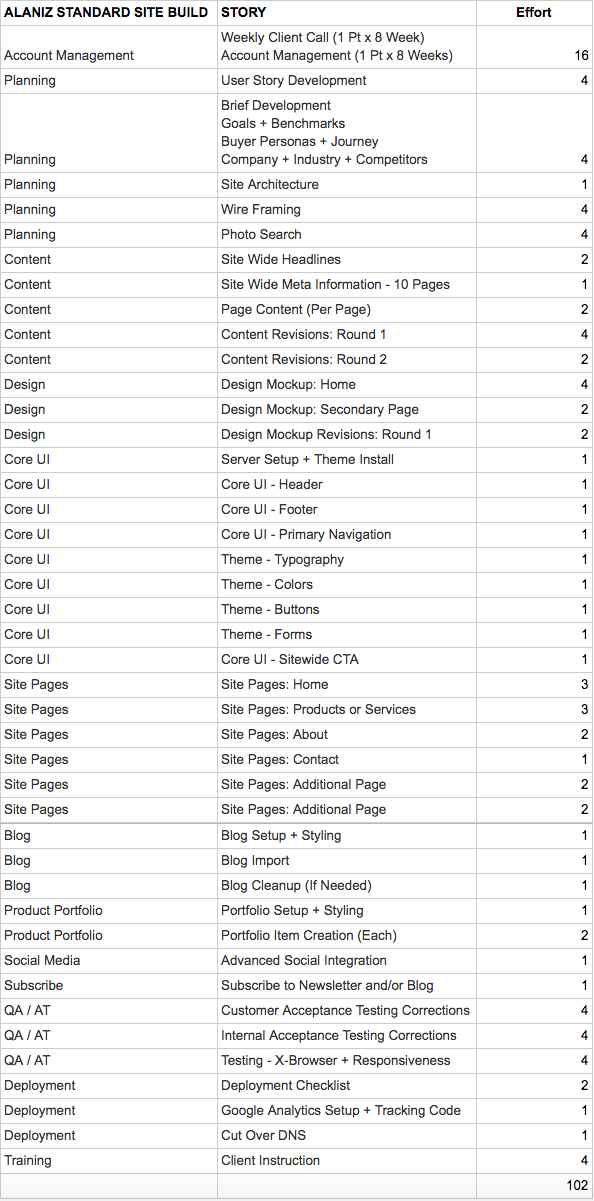This blog post is part of “The Ultimate Guide to Web Development” blog series.
One of the questions we get asked over and over again is, “Why does it cost so much to build a website?”
According to one expert, the “typical” cost of outsourcing development for a business website is $4,500 to $50,000. I’m not sure how you call this estimate “typical” when the range is so large–more than 10x! But the estimate highlights one of the real challenges web developers face, the lack of clarity about how much professional web development will cost.
When someone asks me how much it will cost to create a new website, I usually answer that it’s sort of like asking a contractor how much it will cost to remodel your house. It’s nearly impossible to give a real estimate until you know things like a) the size and condition of the house, b) the extent of the remodel, c) features you want (crown molding, skylights, radiant flooring), d) the types and quality of materials you will be using (flooring, lighting, cabinetry, countertops, appliances, etc), and e) the extent of custom work that will need to be done (knocking down walls, adding living space).
Some of the same issues impact web design and development costs. The size of the site, it’s condition (is it currently custom, built on WordPress?), the features you’ll want (ecommerce, blog), type and quality of assets to use (custom photos and graphics, video, stock photos, copy and content), and how much customization will be required will all impact costs.
The comparison ends there, because there are few physical assets when it comes to website design. People understand that cabinets, flooring, windows, and appliances cost money. They don’t really understand that web pages cost money. The virtualness of digital assets make it all seem somewhat soft.
The fact that there are many “free” website development products available further devalues the process in people’s minds. Services like Weebly and Wix suggest that you can create your own site in a jiffy, with little financial investment. “Free,” of course, means that you don’t consider the time and effort you will put into it you do it yourself.
It’s true that someone can build a very basic website with minimal upfront costs. You can use a free content management system like Weebly, existing photos or videos, and a templated layout. The site may not look especially sophisticated or unique, but if all you need is a simple web presence, you may be able to do it yourself or with a modest investment in things like stock photography and video.
For most businesses, a basic home-made site is not enough. The ubiquitous nature of online searching and shopping means that if you want to attract traffic, engage visitors, and convert visitors to customers, you’ll need professional help. Search engine optimization, content creation, content marketing, branding, and visual messaging are all critical to creating an effective web presence. Few businesses have the expertise to build a website in-house.
When we quote website projects we create a detailed list of tasks so that our customers can see exactly what is involved in creating a new website–much like a building contractor will do when quoting a remodeling project. Every square foot of modification is accounted for, time is estimated, materials are priced, etc. We use Agile project management–a system developed for the software industry that breaks a project down to its smallest tasks and estimates the effort required to perform each task. This provides us with the information we need to give a firm estimate, and it gives the customer transparency about what we’re doing and how much we’re charging for it. A typical estimate might look like this:

In this example, a six-page site built on WordPress using a purchased theme, with a blog, and a product portfolio comes out to about 102 hours of effort. Multiply that times an hourly rate and you have a good estimate of what the site will cost. Note that things like planning, content creation, UX (user interface) design, social media integration, quality assurance, testing, and client training are all accounted for. These are some of the things people don’t realize go into website development.
This blog post is part of “The Ultimate Guide to Web Development” blog series.




